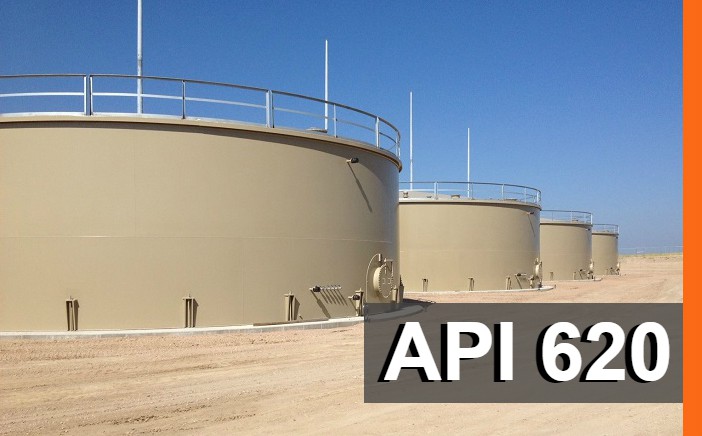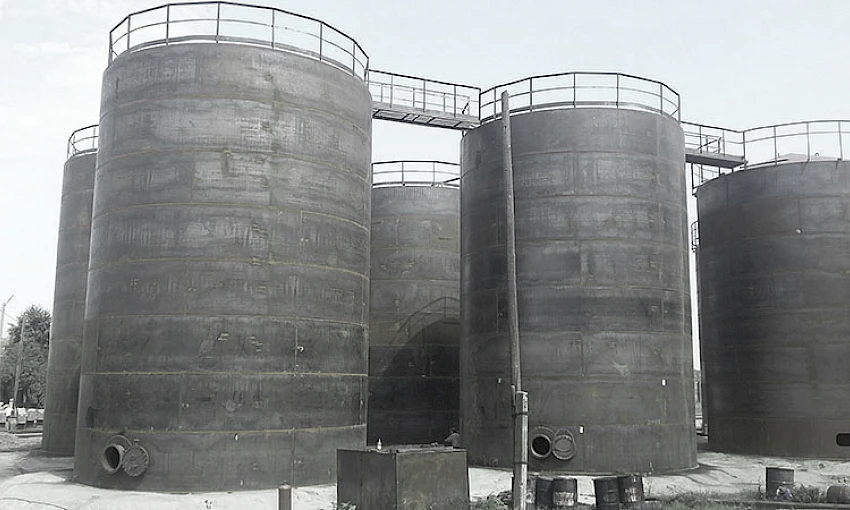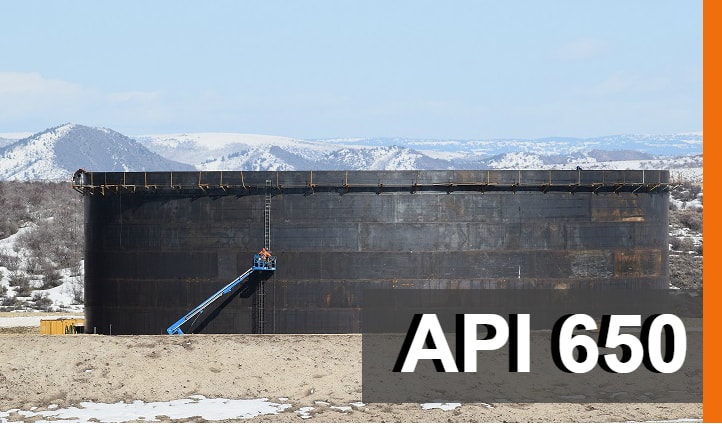Professional API 650 Welding Inspection Methods for Project Accuracy
Wiki Article
Exactly How Welding Assessment Functions: A Comprehensive Overview for Professionals
Welding evaluation plays a vital role in ensuring the safety and security and reliability of welded frameworks. It includes an organized technique that consists of both visual evaluation and advanced testing approaches. Professionals need to acquaint themselves with crucial standards and regulations controling the market. Understanding the common problems that can emerge throughout welding is crucial. This guide will explore these elements carefully, supplying understandings into the processes that copyright quality and stability in welding.Understanding the Importance of Welding Inspection
While lots of may take too lightly the importance of welding inspection, it plays an important function in ensuring the honesty and safety of welded structures. Efficient welding assessment identifies prospective problems and defects that can jeopardize structural strength and result in catastrophic failures. The evaluation procedure encompasses different techniques, such as visual exams, ultrasonic testing, and radiographic analyses, each adding to the overall analysis of weld top quality.
In addition to securing the architectural honesty, welding evaluation ensures conformity with industry standards and customer requirements. By ensuring that welds fulfill needed resistances and characteristics, assessments aid preserve the reliability and longevity of components in different applications, from building to aerospace. Furthermore, an extensive assessment process fosters a culture of quality and liability amongst producers and welders. Eventually, welding examination is not simply a procedural action; it is an essential method that underpins the safety and performance of crafted systems across varied industries.
Key Specifications and Regulations in Welding Examination
The structure of effective welding examination hinges on adherence to established policies and criteria. Different organizations, such as the American Welding Society (AWS) and the American National Specification Institute (ANSI), stated guidelines that ensure top quality and safety and security in welding techniques. Trick requirements, such as AWS D1.1 for structural welding and ASME Area IX for stress vessels, supply detailed criteria for welding assessments, procedures, and qualifications. Regulatory frameworks, consisting of those from the Occupational Security and Health Management (OSHA), mandate security techniques and employee protections in welding environments. Conformity with these standards is important for achieving consistent weld top quality and lessening the risk of failures. Additionally, international requirements like ISO 3834 better boost global uniformity in welding inspection methods. Professionals need to stay informed concerning these regulations to ensure that their inspection approaches straighten with sector assumptions and lawful demands, thus guarding both personnel and architectural honesty.Preliminary Preparation and Visual Examination Techniques

Effective welding assessment starts with an extensive pre-inspection list that assures all needed conditions are satisfied before the actual examination takes place. Following this prep work, visual issue identification plays an important duty in examining weld high quality, allowing assessors to identify issues such as fractures or incorrect blend. Together, these methods develop the foundation for a successful welding inspection process.
Pre-Inspection Checklist
Prior to commencing any kind of welding assessment, a thorough pre-inspection checklist is vital to guarantee that all necessary preparations are completed which visual evaluation methods are effectively used. Trick components of this checklist include verifying the welding procedure requirements (WPS), making sure all equipment is adjusted and in excellent working problem, and verifying that the assessor has the called for accreditations. Additionally, it is important to examine any previous assessment records and to assess the workplace for security hazards. The inspector ought to additionally confirm that all appropriate documentation, such as material certifications and assessment documents, is easily offered. Finishing this checklist assists to develop a solid foundation for an effective inspection process, improving the integrity of the outcomes acquired.Aesthetic Issue Recognition
A successful aesthetic problem recognition process begins with cautious first prep work and the application of recognized aesthetic evaluation strategies. Examiners need to guarantee that the welding area is well-lit and tidy, as ample visibility is necessary for discovering flaws. A thorough examination of the weld joint's surface enables for the identification of gaps, such as fractures, undercuts, or porosity. Inspectors usually make use of devices like amplifying glasses or mirrors to improve their sight of hard-to-reach areas. Additionally, they ought to be acquainted with the specific welding criteria and guidelines Continue relevant to the project. By sticking to these methods, inspectors can properly recognize potential concerns, protecting the honesty of the weld and conformity with industry standards.Non-Destructive Testing Methods: An Introduction
Non-destructive testing (NDT) approaches play a necessary role in the welding examination process by ensuring the integrity and integrity of welded structures without creating any kind of damages (API 650 Welding Inspection). These strategies allow assessors to review the top quality of welds while protecting the elements being examined. Usual NDT techniques consist of ultrasonic screening, radiographic screening, magnetic bit testing, and color penetrant testing, each offering one-of-a-kind advantagesUltrasonic testing utilizes high-frequency audio waves to find interior flaws, while radiographic screening utilizes X-rays or gamma rays to envision the interior structure of welds. Magnetic bit screening exposes surface area and near-surface defects by applying a magnetic field and iron particles to the weld area. Dye penetrant testing highlights surface-breaking imperfections via the application of a colored dye. With each other, these NDT methods provide vital understandings right into weld quality, allowing experts to make informed choices regarding safety and security and conformity in welding applications.
Typical Problems and Their Ramifications
Determining common defects in welded joints is essential for keeping architectural link integrity and security. Numerous defects can emerge throughout the welding procedure, each lugging prospective implications for the overall efficiency of the framework. Porosity, characterized by tiny gas pockets within the weld, can deteriorate the joint and compromise its load-bearing capability. Splits may establish due to thermal anxiety or inappropriate air conditioning, causing prospective failing under anxiety. Insufficient fusion takes place when the weld steel does not completely bond with the base product, leading to weak joints that may not withstand intended tons. Damaging, where the base metal is worn down, can likewise minimize the effective cross-section of the weld. In addition, extreme support can develop anxiety concentrations that can result in failing. Recognizing these flaws quickly permits corrective measures, making sure the long life and integrity of welded structures in important applications.Tools and Devices Utilized in Welding Examination
Reliable welding inspection relies upon a variety of specialized tools and devices to guarantee the quality and honesty of bonded joints. Vital instruments include aesthetic inspection devices, such as multiplying glasses and borescopes, which permit examiners to carefully check out welds for surface area issues. Non-destructive testing (NDT) methods, such as ultrasonic testing, radiographic screening, and magnetic fragment screening, are fundamental for determining inner imperfections without harming the material.Measurement tools, consisting of calipers and weld gauges, aid evaluate dimensions and identify conformity with specs. In addition, hardness testers assess the mechanical properties of welded joints. Individual safety devices (PPE) is likewise necessary, safeguarding the safety of assessors while operating in potentially dangerous atmospheres (API 650 Welding Inspection). Each tool serves a details purpose, collectively improving the efficiency of welding inspection and adding to the reliability of finished tasks
Often Asked Questions
What Qualifications Are Needed to Come To Be a Welding Examiner?
To become a welding assessor, individuals generally require relevant accreditations, such as AWS CWI or CSWIP, along with experience in welding procedures, design principles, and expertise of examination techniques, safety and security criteria, and applicable codes.Just How Typically Should Welding Inspections Be Conducted?
Welding examinations must be performed on a regular basis, preferably at various task stages, consisting of pre-weld, official site during-weld, and post-weld. Frequency may additionally depend on sector requirements, task requirements, and the intricacy of the welds involved.Can Welding Defects Be Repaired After Inspection?

Yes, welding flaws can frequently be fixed after inspection. Relying on the severity and kind of defect, suitable methods such as reworking or extra welding may be used to bring back structural integrity and safety and security compliance.
What Industries Require Routine Welding Assessments?

Numerous markets, including construction, manufacturing, aerospace, and auto, need regular welding evaluations - API 650 Welding Inspection. These assessments guarantee adherence to safety requirements and quality assurance, lessening risks connected with structural integrity and operational efficiency in welded components
Exactly how Do I Select a Welding Examination Solution?
To select a welding examination solution, one need to consider credentials, experience, certifications, and sector reputation. In addition, evaluating client evaluations and assuring the service satisfies appropriate requirements can help assure top quality examinations and reputable outcomes.
While numerous might undervalue the significance of welding assessment, it plays an essential role in guaranteeing the integrity and safety of welded structures. Secret requirements, such as AWS D1.1 for architectural welding and ASME Area IX for stress vessels, offer thorough criteria for welding procedures, certifications, and evaluations. Reliable welding inspection begins with an extensive pre-inspection checklist that assures all required conditions are satisfied prior to the actual evaluation takes place. Prior to commencing any welding inspection, an extensive pre-inspection list is vital to ensure that all required prep work are completed and that visual assessment methods are properly employed. Non-destructive testing (NDT) approaches play an essential function in the welding inspection procedure by ensuring the integrity and reliability of welded structures without triggering any damages.
Report this wiki page